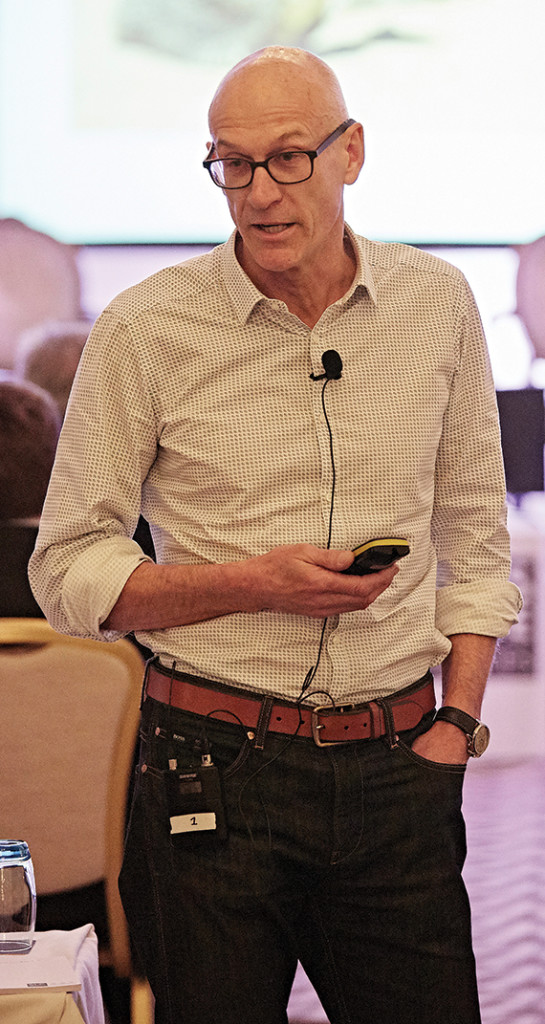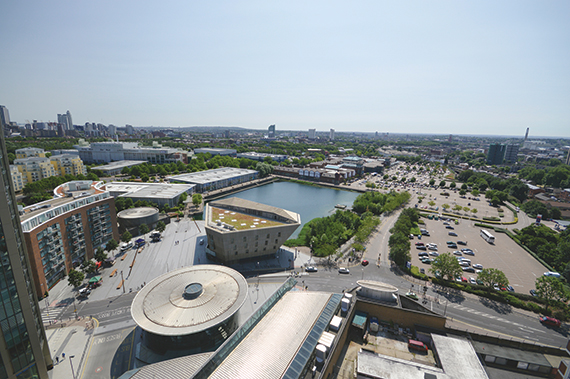-
The man behind King’s Cross looks to replicate success at Canada Water
-
Location, housing crisis and market jitters create an interesting mix of issues
When people first visit Canada Water, says Roger Madelin, the man heading British Land’s 46-acre dockside regeneration scheme, they say two things.
Firstly: “Blimey, it was easy to get here.”
Secondly: “Bloody hell, this is a bit of a desolate wasteland.”
Three months into his new job, the ex-Argent chief executive will be hoping to use the former to take care of the latter.
 That, and a little bit of experience from King’s Cross, N1. Madelin, at Argent since 1987 and joint chief executive from 1997 to 2012, led the redevelopment of the 67 acres of mixed-use space following the firm’s selection by London and Continental Railways in 2001.
That, and a little bit of experience from King’s Cross, N1. Madelin, at Argent since 1987 and joint chief executive from 1997 to 2012, led the redevelopment of the 67 acres of mixed-use space following the firm’s selection by London and Continental Railways in 2001.
British Land hired him to do the same thing in Canada Water, SE16.
“I don’t want to brag about King’s Cross,” he says, “but the public realm is more than half decent, and the buildings are more than half decent. There is still a long way to go… but it’s a successful part of central London.”
On paper, it is difficult to convey just how deadpan Madelin is about his previous work – clearly proud, but also honest about the importance of infrastructure in its success, much of which was out of Argent’s control.
“If the transport was put on hold in 2004, goodness knows what it would look like. We probably would have done some residential on the northern land but it would still be underdeveloped to a large extent, and a wasteland,” he adds.
And if King’s Cross – a national and international rail interchange with six tube lines in Zone One – needed infrastructure, it is possible that developing Canada Water, in what could be described as the geographic armpit of London, could be problematic.
However, Madelin, who gave an insight into the project at EG’s Residential Summit last week, references Transport for London’s Public Transport Accessibility Level rating. Canada Water, he says, has a PTAL level of 6, which is good – the same as King’s Cross – thanks to connectivity provided by the Overground and Jubilee lines.
British Land’s Marble Arch, W1, office, on the other hand, only has a rating of 2, because of the frequently overcrowded Central Line and buses getting caught in traffic.
But when all is said and done, Madelin is looking to show that success is not just about the luck of location. That means getting people interested in Canada Water.
“What I proposed to the board when I arrived was that the first phase needs to be big to change the place physically and in people’s perception.”
As a result, he wants phase one to be 1m sq ft of offices, shops and leisure, alongside 1,000 homes.
“We are going through a process, thinking about what that space is, what occupiers might want to join the journey with us from day one.
“We are having some very exciting conversations with potential office occupiers, and retail and leisure people are excited, because where else could you do 1m sq ft of retail and leisure in London?”
Housing choices
Of course, placemaking and infrastructure investment at the beginning will add considerable value to residential sale prices and retail rents in later phases.
But important too is the recognition that Canada Water is not the same as King’s Cross. “It is Central London with a small ‘c’,” Madelin says.
Times have changed. King’s Cross needed new offices, nowadays, amid a housing crisis, Canada Water needs new homes. The masterplan is for 2m sq ft of workspace alongside 3,500 homes – almost double the 1,900 provided at King’s Cross.
This is itself an advantage. The current demand for housing gives far more options for the site than when it was first redeveloped in the 1980s. But it brings another set of problems around what kind of tenures will be used.
“If you look at residential and break it down into where there is demand, we have 12 different kinds of demand,” says Madelin.
“A vast majority of those could be of real interest to British Land in terms of developing, owning and managing and providing diverse and long-term income.”
With the first plans coming up in six months, Madelin would not be drawn about the exact detail. But he would not rule out British Land developing its own affordable housing.
A long-term approach
One of the attractions of joining British Land, he says, was that it is a long-term business.
“These guys take a very long-term view, and have a very good business plan about diversifying and growing long-term income.”
Having that long-term perspective is going to be essential, because, as with King’s Cross in 2008, the market is shuddering as Canada Water looks set to get going.
Madelin says Canada Water can’t be finished in 10 years, though he would be disappointed if it took longer than 15. “It’s likely to go through two economic cycles,” he says.
He seems unconcerned about this. Having gone through the 2008 recession, the current downturn may seem moderate.
“You do the analysis. If you can get a reasonable entry price, finance development phases sensibly and develop through the cycle, you tend to get better returns from a medium- to long-term view, rather than trying to buy low and sell high.”
Adapting to the changing demands through that cycle will be tricky, but that’s where single ownership – and a big balance sheet – comes in.
“I am sure we will bring in other partners with specialist skills, with finance as well at some point,” he says.
“But the important thing on any major mixed-use scheme is to have control of the estate management strategy, the asset management strategy, and the place strategy. It is the great success behind the great estates of London – Grosvenor, Howard De Walden or Portland.”
And when it all comes down to it, creating new places is a good thing.
“Having something like Canada Water, where you have land, you have the balance sheet, and you have the opportunity to create something, does create a special buzz.”
Even if at the moment it is a bit of a wasteland.
How they compare
King’s Cross
Developer: Argent
Acres: 67
Residential: 1,900 homes
Commercial: 3.4m sq ft
Retail & Leisure: 500,000 sq ft
Transport: Northern, Piccadilly, Victoria, Hammersmith & City, Metropolitan and Circle lines, National Rail services, international rail terminus, all-night rail connections to Luton and Gatwick airports
Council: Camden, with the site owned by London and Continental Railways
Timeframe: Started 2001, ongoing
 Canada Water
Canada Water
Developer: British Land
Acres: 46
Residential: 3,500 homes
Commercial: 2m sq ft
Retail and Leisure: 500,000 sq ft
Transport: Jubilee and Overground lines
Council: Southwark, which owns the freehold on two- thirds of the site
Timeframe: 10-15 years
To send feedback, e-mail alex.peace@estategzette.com or tweet @egalexpeace or @estatesgazette












